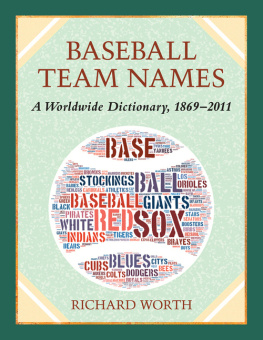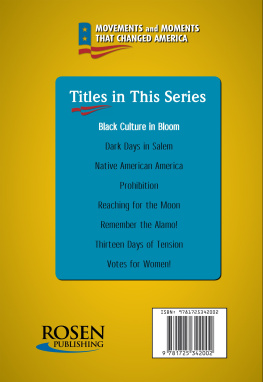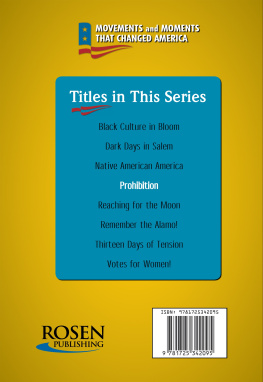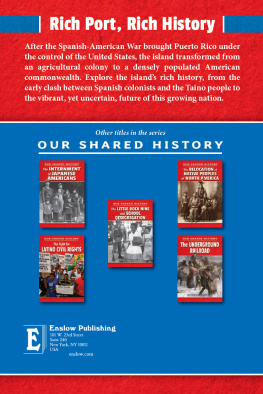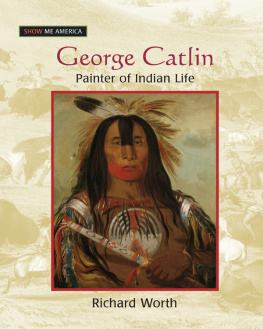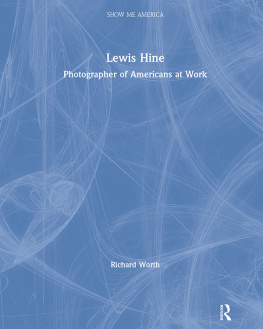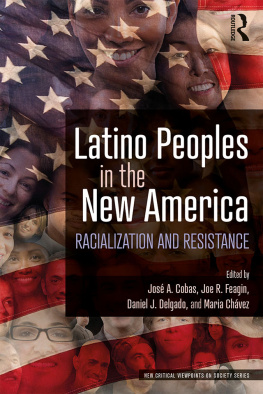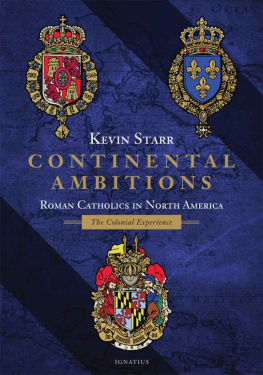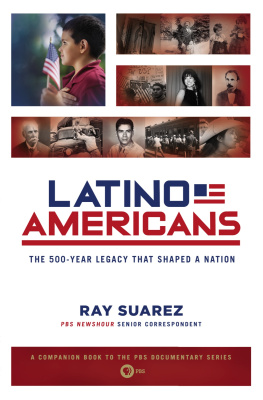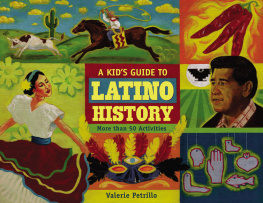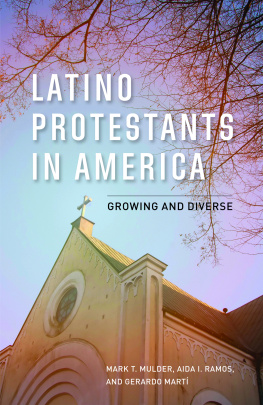Richard Worth - Independence for Latino America: 1776-1821
Here you can read online Richard Worth - Independence for Latino America: 1776-1821 full text of the book (entire story) in english for free. Download pdf and epub, get meaning, cover and reviews about this ebook. year: 2018, publisher: Infobase Publishing, genre: History. Description of the work, (preface) as well as reviews are available. Best literature library LitArk.com created for fans of good reading and offers a wide selection of genres:
Romance novel
Science fiction
Adventure
Detective
Science
History
Home and family
Prose
Art
Politics
Computer
Non-fiction
Religion
Business
Children
Humor
Choose a favorite category and find really read worthwhile books. Enjoy immersion in the world of imagination, feel the emotions of the characters or learn something new for yourself, make an fascinating discovery.
- Book:Independence for Latino America: 1776-1821
- Author:
- Publisher:Infobase Publishing
- Genre:
- Year:2018
- Rating:5 / 5
- Favourites:Add to favourites
- Your mark:
- 100
- 1
- 2
- 3
- 4
- 5
Independence for Latino America: 1776-1821: summary, description and annotation
We offer to read an annotation, description, summary or preface (depends on what the author of the book "Independence for Latino America: 1776-1821" wrote himself). If you haven't found the necessary information about the book — write in the comments, we will try to find it.
As Spanish settlers moved north and Americans moved west, issues involving land, peoples, and resources complicated colonial expansion. Independence for Latino America, Revised Edition chronicles the settlement of California, Arizona
Independence for Latino America: 1776-1821 — read online for free the complete book (whole text) full work
Below is the text of the book, divided by pages. System saving the place of the last page read, allows you to conveniently read the book "Independence for Latino America: 1776-1821" online for free, without having to search again every time where you left off. Put a bookmark, and you can go to the page where you finished reading at any time.
Font size:
Interval:
Bookmark:
Copyright 2018 by Infobase
All rights reserved. No part of this publication may be reproduced or utilized in any form or by any means, electronic or mechanical, including photocopying, recording, or by any information storage or retrieval systems, without permission in writing from the publisher. For more information, contact:
Chelsea House
An imprint of Infobase
132 West 31st Street
New York NY 10001
ISBN 978-1-4381-8029-8
You can find Chelsea House on the World Wide Web
at http://www.infobase.com
The Spanish encounters with the New World began in 1492, when Christopher Columbus sailed to the New World, as the lands in the Western Hemisphere were then known in Europe. At rst, the Spanish took control of islands in the Caribbean Sea from the American Indians.
During the 16th century, the Spanish conquered the Aztec Indians in what is now Mexico and the Inca in present-day Peru. During the conquests, the Spanish discovered that the Indians had collected rich treasures of gold and silver. The Spaniards also found rich silver mines in Mexico and South America. The Spanish enslaved the conquered Indian tribes and forced them to work in the mines. As large shipments of gold and silver were transported back across the Atlantic Ocean, Spain became the wealthiest nation in Europe.
Mexico was called New Spain by the Spanish. From New Spain, the Spanish began to expand their explorations northward. In the 1540s, Francisco Vsquez de Coronado led an expedition to present-day New Mexico, California, and Arizona. The primary motive for Coronados expedition and the others that followed was the desire for riches. When no treasures were found, the Spanish returned to New Spain.
The Spanish came back in the 17th and 18th centuriesthis time to establish permanent settlements in the North American Southwest. The Spanish had never given up their dream of nding cities lled with vast treasures like those in Mexico and South America. But just as important was Spains desire to prevent other nations, such as France and Russia, from occupying California and the Southwest, where they might threaten New Spain.
In addition, the Spanish conquistadores saw themselves as Christian knights. Beginning in the eighth century, Spain had been ruled by Muslim conquerors. Over the next seven centuries, the Christians had gradually pushed back the Muslim armies. Finally, in 1492, the Spanish reconquered all of Spain.
After the retaking of Spain, the conquistadores looked beyond Spain to other lands that might be converted to Christianity. They were convinced that it was their mission to bring the teachings of Christ to people who were not yet Christians.
The pattern of Spanish settlement thus arose from Spains desire to defend its territory from other nations and the belief that the Spanish had a duty to convert the American Indians to the teachings of Christianity. This pattern was far different from English settlement along the Atlantic coast during the same period. The English were primarily interested in establishing towns and enjoying religious freedom. They were not interested in converting the local Indians to Christianity. The English settlers established communities in the 17th century that grew very large as more settlers came to the Atlantic coast over the next 150 years.
By contrast, the Spanish territory that would one day be the U.S. Southwest and California consisted of forts, or presidios, and only a few small towns, like San Francisco, Santa Fe, and San Antonio. The population remained low for many years. Nevertheless, by the end of the 18th century, the Spanish had named and colonized New Mexico, Arizona, California, and Texasterritories that became U.S. states. The settlements at Santa Fe, San Francisco, and San Antonio would grow into large U.S. cities. The Spanish introduced the horse, which transformed the culture of the American Indians on the Western plains. Finally, the Spanish established traditions such as the mission style of architecture that have become part of U.S. culture.
At the beginning of the 19th century, the residents of New Spain began a revolution to achieve their independence from Spain. In 1821 Mexico achieved its own identity as an independent nation and took control of the colonies on the frontier. The success of the independence movement had a large impact on the Spanish colonies in California and along the frontier.
Even as the colonies adjusted to independence from Spain and an independent government in Mexico, they faced a new challenge: U.S. settlers who were migrating westward. These settlers were looking for new places to live within California, Texas, New Mexico, and Arizona. Mexican leaders feared that the new settlers would quickly overwhelm the small Mexican population along the frontier. Soon, U.S. settlers on the frontier would seize these colonies from Mexico, producing a new conflict that helped create the United States as it is today.
Since the 16th century, the Spanish had conquered an enormous empire that stretched from South America to what is now Mexico and northward to Baja (Lower) California. The area of present-day Mexico and Central America was called New Spain, and it was governed from Mexico City. Russian and British traders began moving from Canada into northern California during the 18th century. To stop this threat to New Spain, the Spanish viceroy, or governor, decided to send an expedition into Alta (Upper) California.
In June 1769, a mule train carrying supplies from Baja California reached the harbor at San Diego. This area had been charted by Spanish explorers two centuries earlier, so the Spanish knew roughly where San Diego was located. Riding at the front of the mule train was a Franciscan priest, Father Junpero Serra.
Miguel Jos Serra was born in 1713 on the island of Majorca in the Mediterranean. Serra was educated by the Franciscans on the island. Priests in this order, founded by St. Francis of Assisi in the 13th century, were teachers and missionaries. When he was 15, Serra entered Lullian University in Palma, the capital of Majorca. Soon afterward, he decided to join the Franciscan religious order. He was given the name Junpero, after one of St. Franciss companions. After graduating from Lullian University, Father Serra taught in Palma for many years. Then in 1750, at age 36, he decided to become a missionary in the New World.
After arriving on the coast of New Spain, Serra walked to Mexico City, the capital. It was a distance of 260 miles (418 km). Along the way, he was bitten in the leg by an insect that left him permanently crippled. Serra worked at the College of San Francisco in Mexico City. In 1767, he was appointed head of the Spanish missions in Baja California. A mission was a settlement where Christianity was preached for the rst time in an area where there were no native priests.
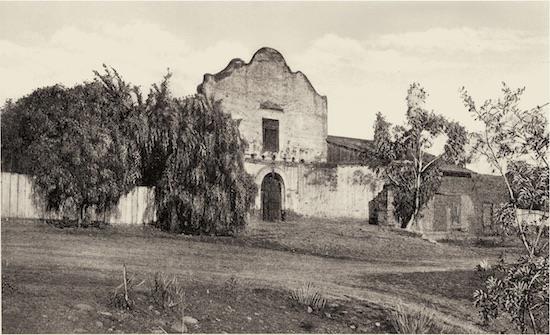
Missions brought a style of architecture to California that is still used today.
Source: California Historical Society
A short time later, Serra was asked to take on a new assignment. The Spanish king, Charles III, had sent a lawyer named Jos Glvez as a special envoy to New Spain in 1765. Glvez was sent to Mexico City to improve the administration and make tax collections more efcient. Meanwhile, Russian traders had crossed from Asia into present-day Alaska, journeying south to northern California. They were trapping seals and otters, whose pelts were widely prized as fur for warm coats. Glvez decided that the Russian push southward threatened Spanish settlements in Baja California. Therefore, he sent Father Serra to California to found new missions in the name of Spain.
Font size:
Interval:
Bookmark:
Similar books «Independence for Latino America: 1776-1821»
Look at similar books to Independence for Latino America: 1776-1821. We have selected literature similar in name and meaning in the hope of providing readers with more options to find new, interesting, not yet read works.
Discussion, reviews of the book Independence for Latino America: 1776-1821 and just readers' own opinions. Leave your comments, write what you think about the work, its meaning or the main characters. Specify what exactly you liked and what you didn't like, and why you think so.


